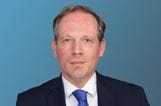The Hydrogen Practice of Allen & Overy Netherlands: "We are on top of international developments"
Related people
Headlines in this article
Related news and insights
News: 30 October 2023
Allen & Overy advises the Aloys Wobben Foundation on its sale of QUADRA energy to TotalEnergies
Publications: 20 April 2023
Publications: 28 July 2022
Equity capital markets in 2022: Europe cools, the Middle East heats up. What next?
Publications: 15 July 2022
Hydrogen is playing an increasingly important role in the transition to sustainable energy, but the path to a Europe full of hydrogen plants is still far from paved.
That's in fact what makes it legally interesting, according to Jochem Spaans, Zeeger de Jongh, Cees van Ginneken and Marinus Winters of Allen & Overy's Hydrogen Interest Group. They advise clients both inside and outside the Netherlands on one of the most important energy sources of the future. "We advise at the intersection between law and technology."
We have the knowledge and expertise to play a leading role internationally in the transition towards sustainable energy.
Jochem Spaans
Grey, blue and green: these are the three colours that Allen & Overy's hydrogen practice is all about. Jochem Spaans: "Hydrogen is potentially a sustainable energy carrier. Presently, hydrogen is already being used as fuel and feedstock for industrial purposes. However, the possibilities to use it on a broad scale are huge: for example, in heavy industry, energy storage and mobility. Hydrogen as such does not occur in nature: it must first be created. This requires a raw material, like natural gas or water, and energy, and that's where the environmental challenge lies.”
Grey, blue and green hydrogen
Grey hydrogen, made with fossil fuels, is in itself a clean energy carrier, but a large amount of CO₂ is released during its production. Blue hydrogen is already more sustainable: the CO₂ released is captured and stored in, for instance, empty salt caverns or (offshore) gas fields. This makes blue hydrogen CO₂-neutral for the foreseeable future. But ideally you want green hydrogen, which is produced with energy from renewable sources such as wind turbines or solar panels. With the electricity generated, an electrolyzer can split water into hydrogen and oxygen. A challenge is the efficiency loss as a result of the production of green hydrogen, but the big gain is that no CO₂is released.
The entire energy transition leads to an increasingly intermittent production of renewable electricity (since the sun does not always shine and the wind does not always blow). Storage is therefore necessary to bridge these periods and hydrogen can play an important role in this respect. Zeeger de Jongh: "It is complicated to store energy. Batteries and battery packs are prohibitively expensive, large quantities of them are needed and their storage process is particularly suitable for the short and medium term. The storage of hydrogen, underground and both on- and off-shore, is in this respect a useful alternative to storage for the medium and long terms."
Presently, the industry already uses hydrogen in the Netherlands and we produce some eight billion cubic metres of grey hydrogen each year. Cees van Ginneken: "To get Europe climate-neutral by 2050, we need to switch from grey to green hydrogen as much as possible in the next few years, and massively increase its production.” Jochem: “This requires investments, both within our borders and internationally. We assist clients in the various stages of that process. We advise at the intersection of law and technology."
The next big thing
A first sustainable milestone will arrive in 2030: according to the targets of the Climate Agreement, the Netherlands should by then emit less than half the greenhouse gases which were emitted in 1990. The current build-up of the Dutch hydrogen industry is therefore only becoming more urgent. Allen & Overy is the right place for parties who want to invest in this relatively unknown sector of the green economy. Zeeger: "Renewable energy is a theme that we've focused on for years. Banks, investors and project financiers are well aware of the fact that sustainability is necessary, but also interesting from a commercial angle. Our clients are always looking out for the next big thing: which large project can be built where? Together with clients, we look for opportunities. And from 2022 there will be opportunities in the production, storage and transport of hydrogen."
The Amsterdam team of A&O's Hydrogen Interest Group consists of specialists from various practice groups. Marinus Winters: "Recently, we assisted Australian investor Macquarie in setting up hydrogen company HyCC, with chemical multinational Nobian. HyCC will develop electrolyzers in Eemshaven, IJmuiden and Rotterdam, as well as elsewhere. This is a fine example of how our work keeps up with social and technical developments. As a firm, we have also been involved in recent years in the construction of nearly all the large off-, near- and on-shore wind farms and solar parks in the Netherlands. We also have extensive experience with LNG (liquid naturalgas) projects. Hydrogen is a logical next theme for us."
Together with clients, we look for opportunities. And in 2022 there are opportunities in the production, storage and transport of hydrogen.
Zeeger de Jongh
Legal frameworks
Marinus: "There is a standard toolkit for each hydrogen project: available land, environmental permits, construction and offtake contracts as well as financing. From various disciplines, we advise clients on laws and regulations in the field of hydrogen and on environmental issues like permits and zoning plans, for example with regard to the construction of electrolyzers or the transport and storage of hydrogen. In addition, we advise on specific issues such as electricity connections and power purchase agreements, as well as subsidies."
Jochem: "The legal playing field is in a state of flux, particularly due to European developments. Changes to the CO₂ emissions trading system, the expected introduction of a Carbon Border Adjustment Mechanism (CBAM)." Marinus: "Market regulation and competition are also on our radar and the details of the European regulation of the hydrogen market are important for the national regulation as well."
Jochem: "This is typical of this topic: the legislation that applies to hydrogen is largely based on legislation for fossil energy supplies that dates back to the 1990s. At the same time, market developments are moving incredibly fast. This means that we all sketch the legal frameworks on the go, on the basis of often outdated legislation. This leads to many questions about matters like the exact definition of low-carbon fuels and about safety, for example in connection with hydrogen storage. A lot of research is now being done, on the basis of which legislators will have to make choices."
Charted risks
In transactions, the future regulation of hydrogen is still an uncertain factor. Hydrogen production is presently still expensive, the technology is relatively new and there are no real economies of scale yet. Cees: “There is no nationwide hydrogen infrastructure yet, but the current natural gas network offers a special starting position compared to other countries, and the Netherlands also has the advantage of having access to much offshore wind energy, that the heavy industry is divided into clusters and that it is geographically located favourably for transport to the wider European hinterland.” Zeeger: “At the same time, there is a big push for the green economy from bankers and investors themselves. This is also reflected in their products: for example, they sometimes charge a lower interest rate for companies that produce sustainably.”
In the hydrogen practice, questions come up regularly about the risks of investing in hydrogen projects. Zeeger: "Of course, anything that potentially affects the cash flow constitutes a risk, but there are a number of options to address this, for example, with solid checks on what is proposed in terms of construction. Other mitigants are subsidies, by insuring certain risks or by contracting separately or otherwise. Also, with higher volumes, production becomes cheaper. It is important that the Dutch government starts providing investment security as soon as possible. Banks and insurers therefore regularly ask us for advice. With each project, we look at existing and new possibilities. With all the knowledge we have in-house, both in Amsterdam and in our global network, we put our legal weight behind achieving a bankable outcome for every project."
Hydrogen is a logical next theme for us.
Marinus Winters
International practice
Marinus: "Allen & Overy has the position of frontrunner when it comes to innovative projects. Legally speaking, those projects are the most challenging for us: we like to tackle things when they have not yet fully settled down. By way of example: in the Netherlands our firm was involved in the first offshore wind energy projects, the first project financed water purification plant, the first project financed sluice, power station and motorway. Globally as well, we are often first: thanks to our Global Energy Group, we are once again on top of international hydrogen developments. We have good contacts with project financiers and infrastructure investors: whether it concerns a substantive question from a client or an introduction in a particular country, we speak directly to someone who is a few continents away."
Jochem: "In Australia and the Middle East, a lot is already happening in the field of hydrogen. And closer to home, in Germany and France for example, all kinds of large hydrogen projects are being set up with government subsidies, in which A&O is involved. We make good use of this foreign experience, especially when it comes to structuring projects. Conversely, we also receive questions from foreign parties: what will the European regulations for green hydrogen be? How will this be implemented in the Netherlands? And, what exactly will be the qualification for the 'green' stamp? That is still not entirely clear. The market is eagerly awaiting clarity on these matters from the European Commission."
Scaling up
Jochem: "Hydrogen requires more than just electrolyzers. There will also have to be much more green electricity. In the next few years, the Netherlands will further scale up with offshore wind farms that can power the electrolyzers. The recent coalition agreement states that these wind farms must produce 21 gigawatts by 2031, whereas in 2021 the figure stood at 2.5 gigawatts."
Investment in hydrogen
In the Netherlands the Rutte IV Cabinet has set up a EUR35 billion climate and transit fund for the next ten years, in addition to the current schemes. Of this sum, some EUR15 billion is earmarked for 'high-quality renewable energy carriers' and the development of the Dutch hydrogen economy. In addition, the Cabinet wants to build two nuclear power plants, which can (also) be used for the production of hydrogen.]
Marinus: "Eventually, I think the Netherlands will be too small to establish a hydrogen industry that allows us to fully comply with the climate targets. That is why the Netherlands is focusing in particular on the import of hydrogen as well. Together with Gasunie, the Netherlands sees a role for itself in the hydrogen network that is to be created throughout Europe between local industrial areas from 2030 onwards. There will be a European distribution system operator and also, it is expected, an association of network operators. Whenever we are asked to advise on the European network, we can discuss the issues directly with our European Allen & Overy colleagues."
To get Europe climate-neutral by 2050, we need to switch from grey to green hydrogen as much as possible
Cees van Ginneken
Leading role
The rapid developments and geopolitical and social aspects make the work of the Hydrogen Interest Group fascinating and challenging, the experts all agree. Jochem: "Clients know we can advise them in this relatively unexplored, but incredibly interesting and topical area. We have the knowledge and expertise to play a leading role internationally in the transition towards sustainable energy."



